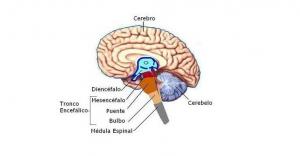Brain development of the fetus and abortion: neuroscientific view
Imagine that you, dear reader, finds out that a friend, sister, aunt, or acquaintance just got pregnant.
She does not know what to do, since she is only 16 years old; her boyfriend has abandoned her, she is desperate and is thinking of terminating her pregnancy. What advice would you give him? To abort or not to abort? If she aborts is she going to hell? Is the product already a human being, does it have a soul?
Abortion from the prism of neuroscience
To understand abortion, neurosciences, and, specifically, neuroethics, have begun to investigate and reveal the secrets of the human brain. Several studies have found some interesting facts regarding brain development and how it relates to the decision to terminate the pregnancy or not.
It should be clarified that this is not a document that is for or against abortion or conception, it is simply present the strongest arguments regarding brain development by prominent neuroscientists.
Brain development in fetuses: how does it occur?
Third week after conception: first neurological foundations
I will start by saying that brain development, according to Pinel (2011) begins about three weeks after conception, when the tissue that is destined to form the human nervous system can be recognized in the form of a neural plate; but it is not until the fourth week after the three bumps appear that the first signs of a brain appear.
Later, electrical brain activity does not begin until the end of week 5 and 6, that is, between 40 and 43 days of gestation. However, it is not a consistent activity; it is not even as coherent as a shrimp's nervous system.
Week 8, neurons appear and spread through the brain
Despite this, for Gazzaniga (2015), it is between week 8 and 10 when true brain development begins. Neurons proliferate and begin their migration throughout the brain. The anterior commissure also develops, which is the first interhemispheric connection (a small connection). During this period, reflexes appear for the first time.
The temporal and frontal poles of the brain develop between weeks 12 and 16. The surface of the cortex appears flat during the third month, but furrows appear at the end of the fourth month. The lobes of the brain itself arise, and neurons continue to proliferate through the cortex (Gazzaniga, 2015).
By week 13 the fetus begins to move. But the fetus is not yet a sensitive and conscious organism, but a kind of sea slug, a cluster of processes motor-sensory induced by reflex acts that does not correspond to anything in a directed or ordered way (Gazzaniga, 2015).
Week 17, the first synapses
Already in week 17, numerous synapses are formed. Synaptic development does not fire until about day 200 (week 28) of gestation. However, around week 23 the fetus can survive outside the womb with medical assistance; also at this stage the fetus can respond to aversive stimuli. The most important synaptic development continues until the third or fourth postnatal month. By week 32, the fetal brain controls respiration and body temperature.
It should be noted that when the child is born, the brain resembles that of an adult, but it is far from having completed its development. The cerebral cortex increases in complexity over years, and synapse formation continues throughout life.
Some conclusions about life, the brain and the possibility of abortion
In conclusion, it can be said that if at birth, the brain is still far from fulfilling its functions as any adult knows them, the brain of a group of cells is not and will not be a brain that can developSince, as mentioned, it is not until week 23 that the product can survive, and only with the help of a specialized medical team.
In short, the brain of an adult is only because it has been able to develop in a context that gives it the experiences to become a healthy and normal brain.
The debates and decisions of our lives must begin to be taken and discussed from a scientific point of view and not from a religious, political point of view or ignoring what happens inside our head.
Thanks to the understanding of science and, specifically, of neurosciences, better decisions can now be made, in addition that these will help us to eliminate guilt, thanks to the systematic and rational knowledge to which the conclusions lead scientific.
Bibliographic references:
- Gazzaniga, M. (2015). The ethical brain. Spain: Paidós.
- Pinel, J. (2011). Biopsychology. USA: Pearson.
- Swaab, D. (2014). We are our brain. How we think, suffer and love. Spain: Editorial Platform.

